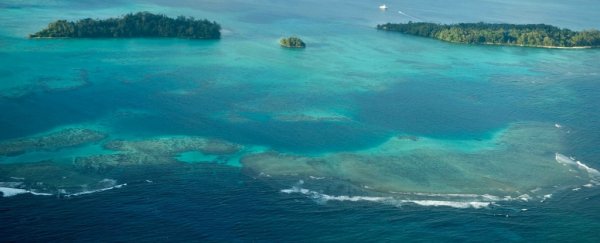We're all aware that climate change is happening across the world, but we rarely ever see it in action. Instead, most reports aim to expose future events before they happen, to hopefully give researchers enough time to prepare for or quell the incoming damage.
This is not so in the Pacific Ocean, because Australian researchers just announced that five of the Solomon Islands have disappeared thanks to rising sea levels. Yup, like something out of a televised disaster movie, five islands have been swallowed by the sea and researchers say climate change is to blame.
According to the study, which was led by researchers from the University of Queensland, climate change has caused five vegetated reef islands to completely sink underwater, while another six have had their coasts almost completely eroded. To make matters worse, one of these six islands had 10 houses swept from its shores and into the sea.
"At least 11 islands across the northern Solomon Islands have either totally disappeared over recent decades or are currently experiencing severe erosion," the team told the press. "Shoreline recession at two sites has destroyed villages that have existed since at least 1935, leading to community relocations."
The team was able to gauge how high sea levels have risen in the Solomon Islands by analysing aerial and satellite imagery from 1947 to 2014 along with historic and local reports.
Over this period, the team kept tabs on 33 islands, and found that the area is a sea-level hotspot that rises almost three times higher than the global average, the AFP reports.
On top of the sea levels rising, the study also found that the area is affected by high wave energies, which together can quickly erode and destroy coastlines.
While these rising tides have only caused a small amount of destruction so far in the local communities, it's a clear sign that climate change could force relocation in the near future - an issue that has already been raised in other areas of the world.
Despite the findings, the team doesn't offer a solution to the problem. Instead, they say their techniques might prove useful for watching other coastlines in the future.
Basically, they claim that what is happening right now in the Solomon Islands should stand as an ominous message about the effects of rising sea levels, especially for populations living in coastal regions. Not exactly a good sign, considering that most major cities are near the water.
The team's report was published in Environmental Research Letters.
